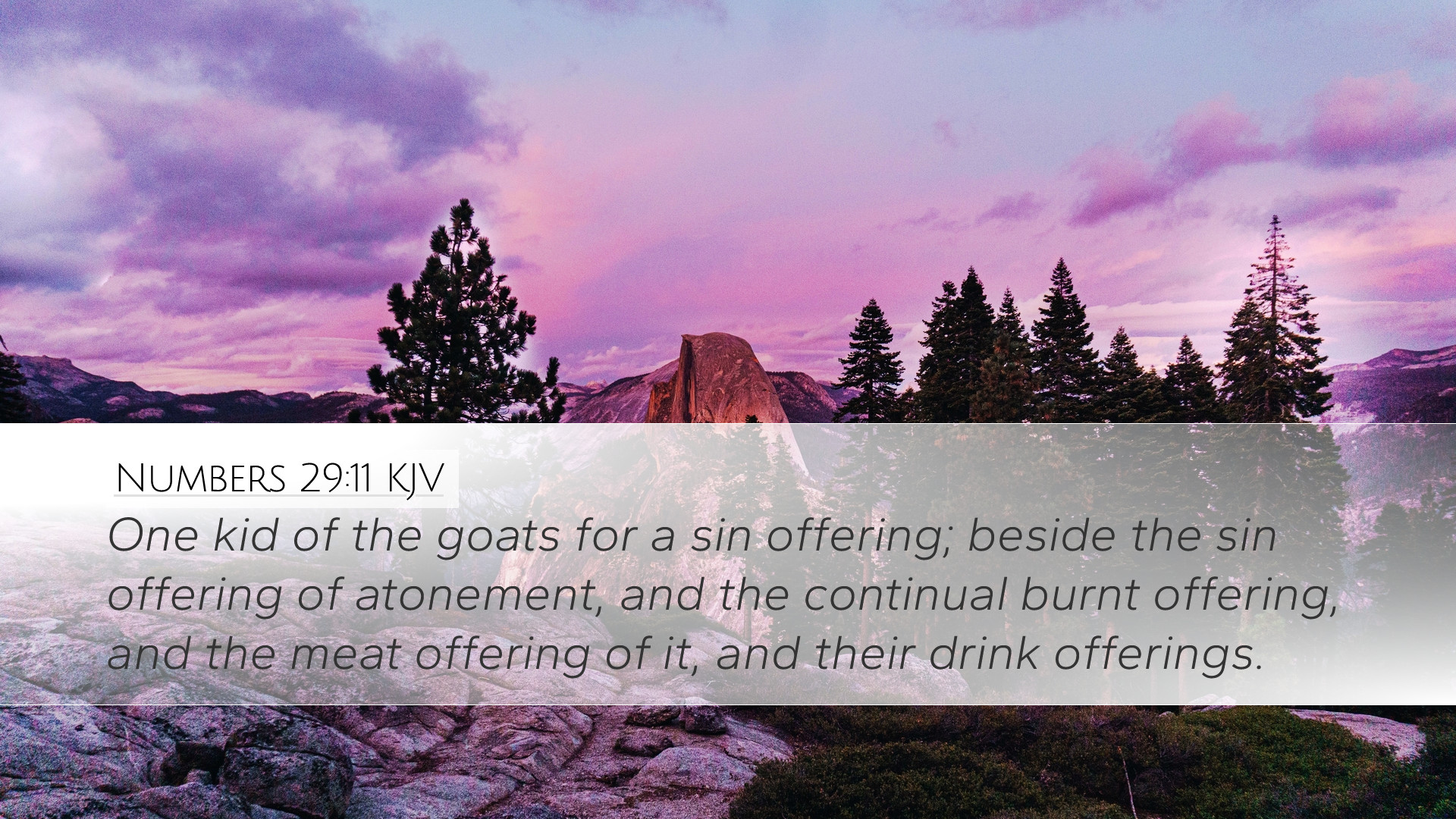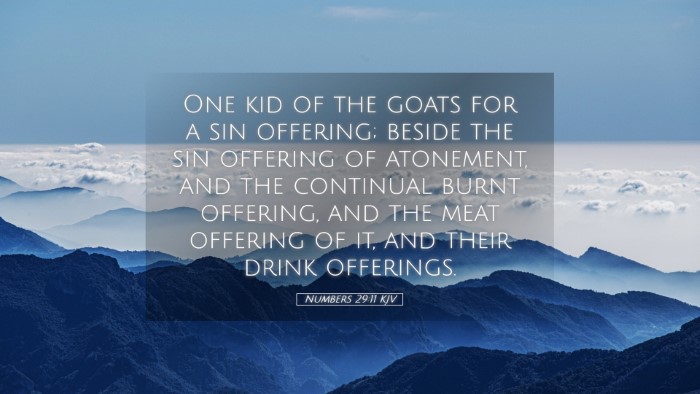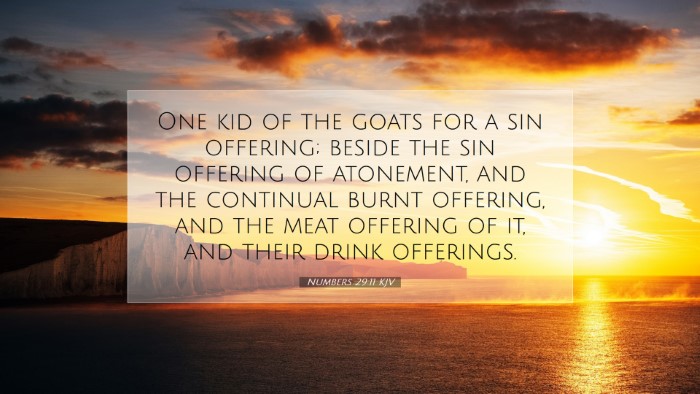Commentary on Numbers 29:11
Verse Reference: Numbers 29:11 - "And one kid of the goats for a sin offering; beside the sin offering of atonement, and the continual burnt offering, and the meat offering of it, and their drink offerings."
Introduction
This passage occurs within the context of the detailed instructions given to the Israelites regarding their offerings during the Feast of Tabernacles. The underlying purpose of these sacrifices reflects the principles of atonement, worship, and communal celebration before God.
Exegesis and Theological Insights
The significance of the offerings described in Numbers 29:11 encompasses various theological themes:
- Atonement: The sin offering, represented by the "kid of the goats," indicates the necessity of atonement for sin. Both Matthew Henry and Albert Barnes emphasize the importance of this offering in reconciling the community with God.
- Community Worship: These sacrifices were not merely ritualistic but intended to foster a sense of community among the Israelites. Adam Clarke notes that the celebrations and offerings were a time for the people to come together in unity before God.
- Divine Mandate: The offerings were established by divine command. The meticulous detail of the sacrificial system reflects God’s holiness and the seriousness of sin in His creation. The requirement for a sin offering signifies the ongoing need for purification.
Historical Context
Understanding the context of sacrificial practices in ancient Israel can elucidate the importance of Numbers 29:11. The children of Israel were accustomed to a variety of offerings during their festival calendar. As underscored by Clarke, these practices shaped their collective identity as God’s chosen people.
The Significance of the Goat
The use of the kid of the goats specifically as a sin offering carries thematic weight:
- The kid represents innocence and the unblemished quality expected in sacrificial animals. This symbolizes the purity required to approach a holy God.
- Biblically, the goat was a significant symbol in the Day of Atonement rituals, which established patterns that would carry through to New Testament understandings of Christ's ultimate sacrifice for humanity.
The Structure of Offerings
The complexity of this verse also speaks to the broader sacrificial structure outlined in the Torah:
- The Continual Burnt Offering: As highlighted by Barnes, the burnt offerings represent total dedication and consecration to God. This ongoing offering served as a reminder of the community’s commitment to God before all else.
- The Meat Offering: Known as the grain offering, this reflects gratitude and recognition of God’s provision. This component of worship emphasizes the relationship between God’s provision and human response.
- Drink Offerings: Symbolizing the outpouring of one’s life, the drink offering served as an expression of devotion and acknowledgement of God’s role in the sustenance of life.
Theological Implications for Today
For contemporary theologians and pastors, the implications of Numbers 29:11 are profound:
- Atonement in Christ: The sin offering serves as a precursor to the ultimate atonement found in Christ. Pastors can draw parallels that invite congregations to understand the depth of their salvation history.
- Communal Identity: Just as the Israelites gathered to celebrate and make offerings, Christians today are called to gather in community worship, reflecting on their shared identity in Christ through His atonement.
- Holiness and Worship: The meticulous nature of the sacrifices illustrates an essential principle of holiness in worship. God is holy, and our approach to Him should reflect that awe and reverence.
Conclusion
Numbers 29:11 encapsulates essential components of Israelite worship that emphasize atonement, community, and the holiness of God. By recognizing the richness of this verse through the lens of public domain commentaries, scholars and pastors alike are reminded of the continuity of God’s redemptive work from the Old Testament into the New Testament fulfillment in Jesus Christ.


